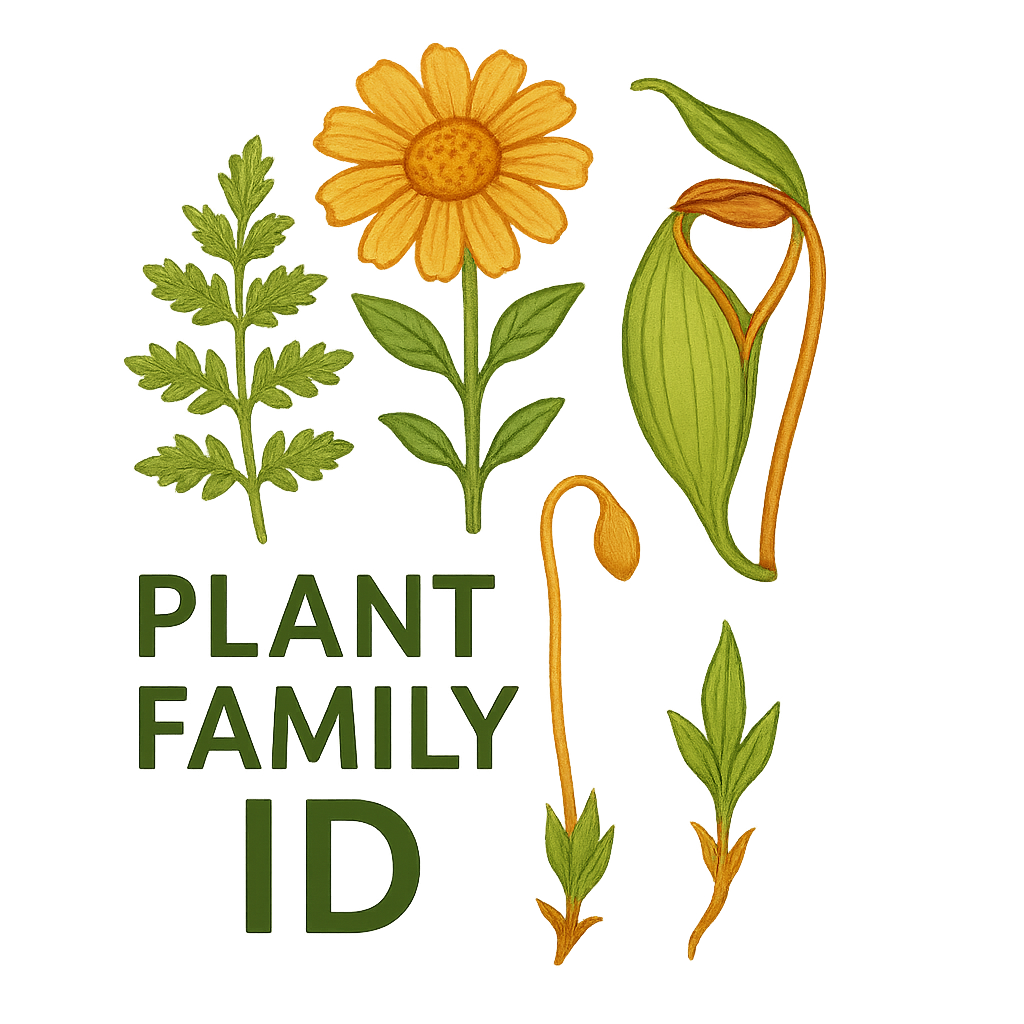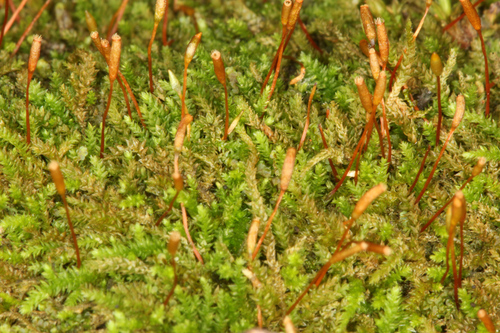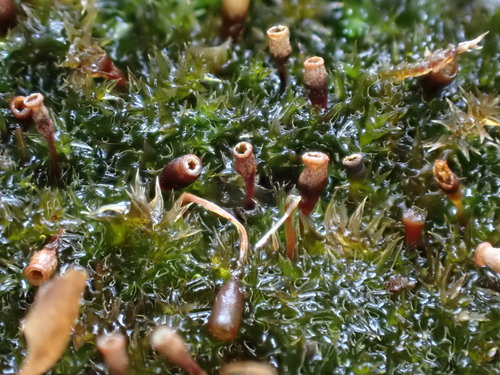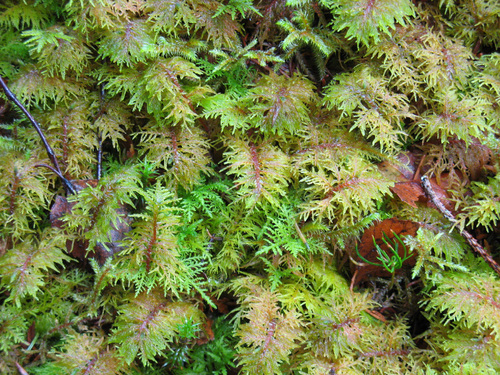Thuidiaceae
Fern Moss Family
The Thuidiaceae family comprises pleurocarpous mosses renowned for their intricate, regularly branched structure, often resembling miniature ferns. Key features include pinnate branching (1-3 times), the common presence of paraphyllia on stems and branches, and typically papillose leaf cells. They are widespread, commonly found on the forest floor, logs, and rocks.

Overview
Thuidiaceae is a large and cosmopolitan family within the order Hypnales. Its members are easily recognized in the field by their highly organized, pinnately branched growth form, which gives them a delicate, fern-like appearance. This regular branching pattern, combined with the presence of paraphyllia (small appendages on the stems/branches) and papillose leaf cells, defines the family concept for many bryologists.
These mosses are common components of the ground layer in forests and woodlands worldwide. They typically grow in mesic (moderately moist) environments on various substrates, including soil, humus, decaying wood, rock surfaces, and the bases of trees. Their intricate structure provides microhabitats for small invertebrates.
Quick Facts
- Scientific Name: Thuidiaceae Schimp.
- Common Name: Fern Moss Family
- Number of Genera: Approximately 15-20 (e.g., Thuidium, Abietinella, Haplocladium, Pelekium; Anomodon sometimes included)
- Number of Species: Approximately 150
- Distribution: Cosmopolitan.
- Evolutionary Group: Bryophytes - Mosses (Class: Bryopsida, Order: Hypnales)
Key Characteristics
Growth Form and Habit
Plants are pleurocarpous, typically medium to large, forming intricate, interwoven mats or loose wefts. The branching pattern is highly characteristic: stems are usually creeping or arching and give rise to branches in a regularly 1-, 2-, or 3-pinnate fashion, creating a flat, layered, fern-like appearance. The overall texture can be somewhat stiff.
Stems and Paraphyllia
Stems and often primary branches are typically covered with paraphyllia. These are small, filamentous or leaf-like appendages found on the stem/branch surface between the leaves. The abundance and morphology (shape, branching) of paraphyllia vary among genera and are important taxonomic characters. They likely increase surface area for water retention or photosynthesis.
Leaves
Leaves are typically dimorphic (differing between stems and branches). Stem leaves are usually larger, broadly ovate or triangular-ovate, often abruptly narrowed to an acuminate (tapering) apex, frequently strongly plicate (with longitudinal folds or pleats), and sometimes with recurved margins. Branch leaves are smaller, generally ovate to lanceolate, concave, and less strongly plicate. Leaf margins are typically serrulate or crenulate, especially towards the apex. The costa (midrib) is single and usually strong, ending below the apex or occasionally percurrent. Leaf cells are typically small, isodiametric (quadrate, rounded, or hexagonal) to shortly rectangular, usually thick-walled, and characteristically papillose. Papillae are usually single and centered over the cell lumen, but variations exist. Alar cells are generally not strongly differentiated.
Sporophyte (Capsule)
Sporophytes arise laterally from the main stems. The seta (stalk) is long, slender to stout, usually smooth, and often reddish. The capsule is typically inclined to horizontal, usually curved (arcuate), and ovoid to cylindrical. The operculum (lid) is typically conical to rostrate (beaked).
The peristome is double and well-developed, of the Hypnoid type. The 16 outer exostome teeth are yellowish to brownish, lanceolate, typically cross-striate below and papillose above. The inner endostome consists of a high basal membrane, well-developed, keeled segments (often perforated along the keel), and usually robust, often nodose or appendiculate cilia (typically in groups of 1-3).
Habitat
Commonly found in mesic (moderately moist) forests and woodlands. They grow on a variety of substrates, including the forest floor (soil, humus, leaf litter), decaying logs and stumps, rock surfaces (often shaded), and the bases of trees. Some species can tolerate more open or disturbed habitats like lawns or pastures.
Field Identification
Thuidiaceae are often recognizable by their distinctive growth form:
Primary Identification Features
- Regularly Pinnate Branching: Stems branched 1-3 times in a flat, feather-like or fern-like pattern.
- Fern-like Appearance: The overall growth form is highly suggestive of a miniature fern.
- Paraphyllia Present: Look for small filamentous or leafy appendages covering the stems and main branches (requires hand lens).
- Papillose Leaf Cells: Leaves usually appear dull due to papillose cells (confirm with magnification).
- Pleurocarpous Habit: Forming mats or wefts with lateral sporophytes.
Secondary Identification Features
- Dimorphic Leaves: Stem leaves often larger and more pleated than branch leaves.
- Single Costa: Midrib present, usually ending below the apex.
- Habitat: Common on forest floor, logs, rocks in mesic environments.
- Inclined, Curved Capsules: Characteristic sporophyte posture.
Seasonal Identification Tips
- Year-Round Gametophytes: The distinctive fern-like structure is visible year-round.
- Sporophyte Maturity: Capsules often mature in summer or fall.
Common Confusion Points
- Hylocomiaceae (e.g., Hylocomium splendens): Also regularly pinnate and fern-like, but often larger, with distinct "stair-step" growth in Hylocomium, reddish stems, and different paraphyllia/leaf structure.
- Hypnaceae: Some species are pinnately branched but usually lack paraphyllia and typically have smooth, longer leaf cells.
- Brachytheciaceae: Branching often less regular, leaves often plicate but cells usually smooth and longer; lack paraphyllia.
- Leskeaceae: Often dull and papillose but branching usually irregular or simply pinnate, paraphyllia different or absent.
Field Guide Quick Reference
Look For:
- Pleurocarpous mats with fern-like appearance
- Regularly 1- to 3-pinnate branching
- Paraphyllia present on stems/branches (use lens)
- Leaf cells typically papillose (dull look)
- Habitat: Forest floor, logs, rocks
Key Variations:
- Genera like Thuidium, Abietinella
- Stem & branch leaves often differ
- Capsule inclined/curved
- Peristome double (Hypnoid)
Notable Examples
The genus Thuidium contains many common and characteristic species.

Thuidium delicatulum
Delicate Fern Moss / Common Fern Moss
A very common and widespread species in eastern North America and other regions, forming intricate, yellow-green to green mats on soil, logs, and rocks in forests. It is typically 2-pinnately branched. Stem leaves are triangular-ovate and strongly plicate; branch leaves are smaller and ovate. Paraphyllia are numerous and branched. Leaf cells have a single papilla.

Thuidium tamariscinum
Tamarisk Moss
Common in Europe and other temperate regions, often found on the forest floor in woodlands. This species is robust and typically 3-pinnately branched, creating very dense, layered, fern-like mats. Its structure is even more complex and layered than T. delicatulum. Paraphyllia are abundant. Sporophytes are common.

Abietinella abietina
Fir Moss
Found in open, often calcareous grasslands or dry, rocky habitats, especially in temperate Eurasia and North America. It is stiff, wiry, and regularly 1-pinnately branched, resembling a tiny fir branch. Plants are often yellowish-brown or golden-brown. Paraphyllia are present. Less "fern-like" than Thuidium but shares key family traits.
Phylogeny and Classification
Thuidiaceae is a well-established family within the large pleurocarpous order Hypnales. It belongs to the suborder Leskeineae, which also includes families like Leskeaceae and Amblystegiaceae. The Thuidiaceae lineage is characterized by the evolution of highly organized pinnate branching, the presence of paraphyllia, and typically papillose leaf cells.
The exact circumscription of the family and its relationship to closely allied families (like Leskeaceae or the segregate Anomodontaceae) can vary slightly depending on the classification system and recent molecular data, but the core concept centered around Thuidium and related genera is generally stable.
Position in Plant Phylogeny
- Kingdom: Plantae
- Division: Bryophyta (Mosses)
- Class: Bryopsida
- Order: Hypnales
- Family: Thuidiaceae
Evolutionary Significance
The Thuidiaceae family is significant for:
- Complex Morphology: Demonstrating the evolution of highly organized, multi-level pinnate branching structures resembling vascular plant fronds.
- Development of Paraphyllia: Showcasing the extensive development of paraphyllia, structures whose function is debated but likely related to water relations or protection.
- Ecological Role: Being important components of the ground and epilithic/epiphytic flora in many forest ecosystems, contributing to biomass and habitat structure.
- Phylogenetic Relationships: Providing insights into the diversification within the Leskeineae suborder of the Hypnales.



